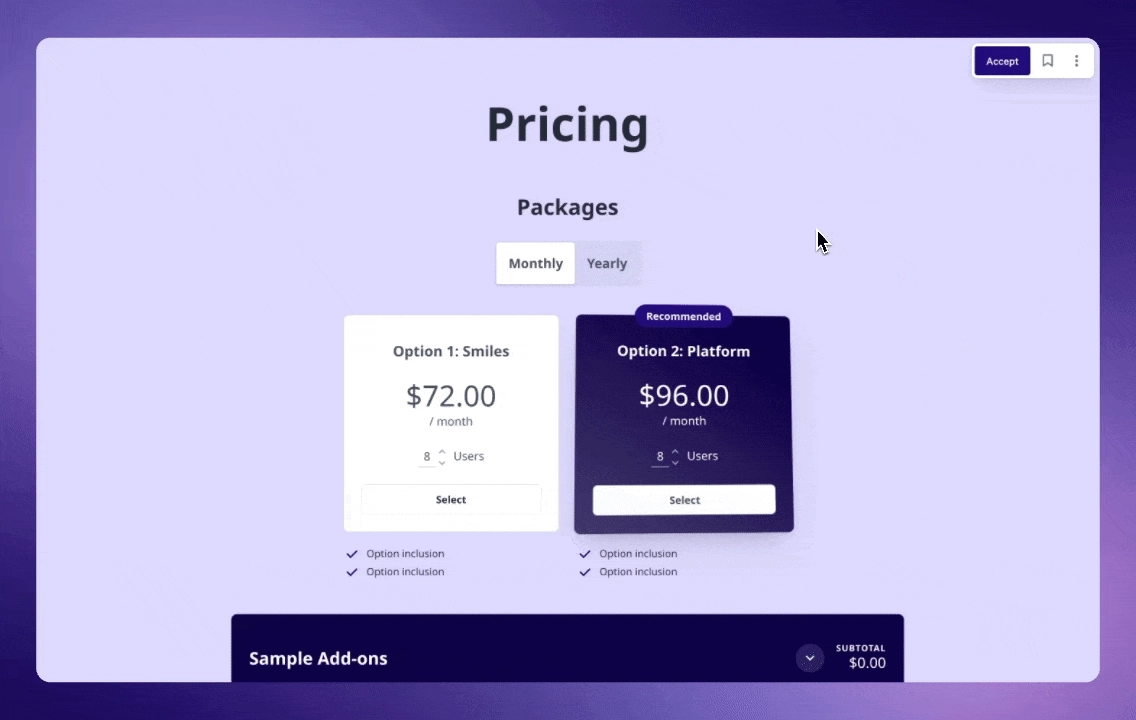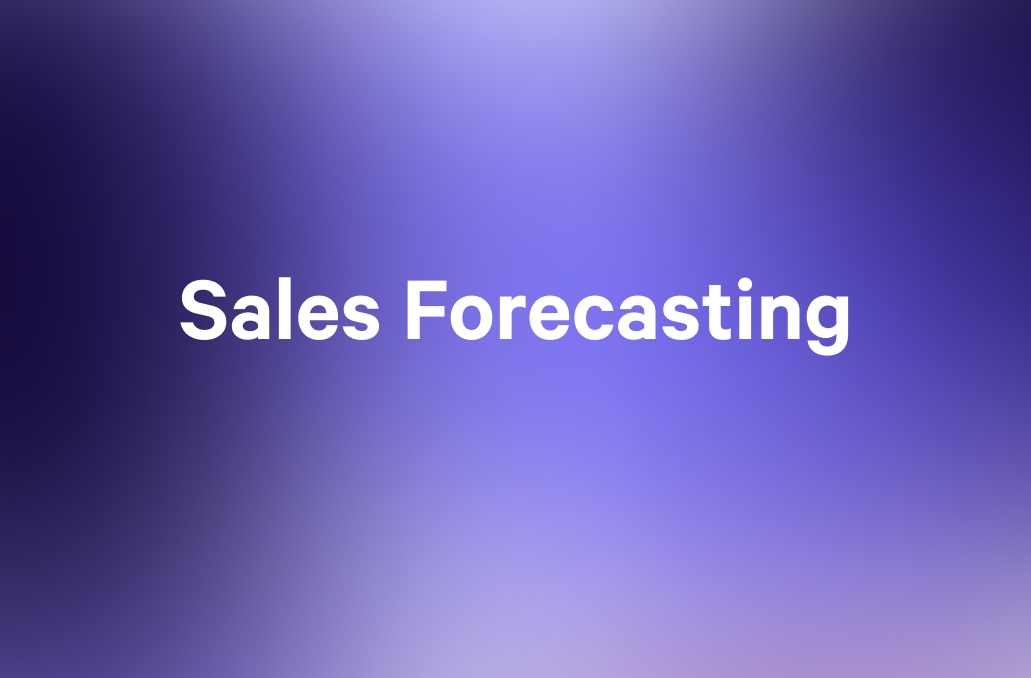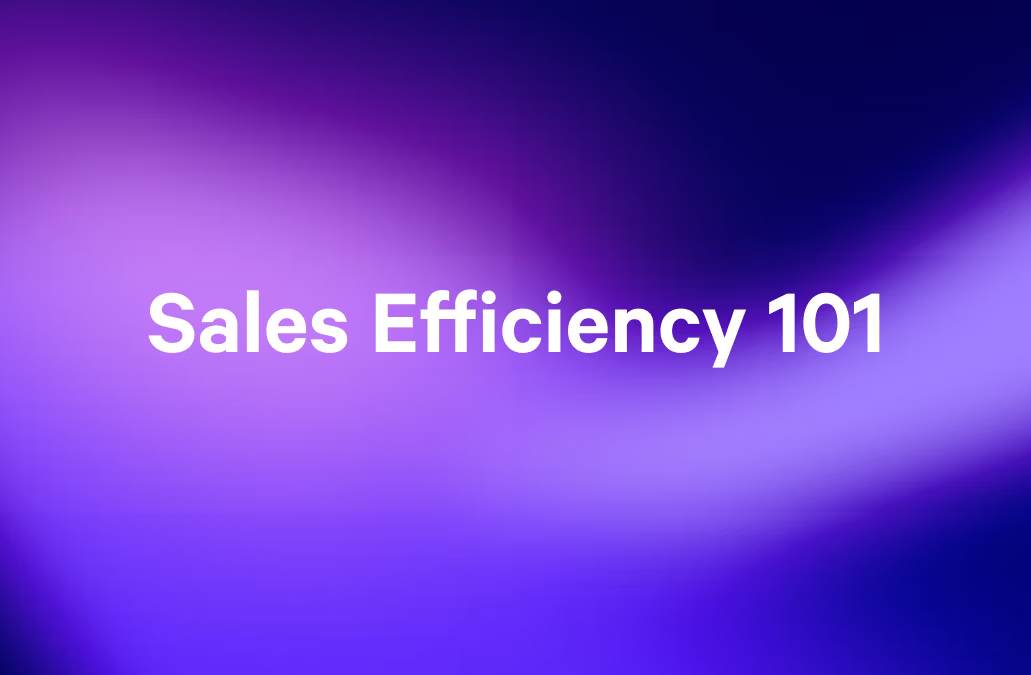When it comes to sales, I always love a Ted Lasso reference because it perfectly captures what we often miss in our pursuit of results. AFC Richmond discovered that success isn't about running more drills; it's about running the right drills with purpose and focus. And when it comes to sales effectiveness, the lesson is exactly the same.
Your sales team is putting in the hours—packed calendars, meticulous CRM updates—yet deals keep vanishing into "decision postponed" or "lost to no decision." According to Forrester, the average quota attainment hovers around just 50%, despite teams working longer hours than ever.
So how does your sales team shift from simply being busy to being truly effective? In other words, consistently hit targets than be stuck in the hamster wheel of activity without results?
We'll discuss this and more in this guide, where you'll discover how to measure true sales effectiveness, identify metrics that actually predict success, implement a practical improvement framework, and leverage proposal tools to boost conversion rates dramatically.
But first, the basics…
Key takeaways
- Sales effectiveness prioritizes the quality and impact of sales activities over quantity.
- Accurate sales effectiveness measurement requires considering context, trends, role-specific benchmarks, and business outcomes.
- Improving sales effectiveness involves optimizing processes, developing skills, and leveraging technology like proposal software.
What is sales effectiveness, and why does it matter?
Sales effectiveness is the measure of how well your sales team achieves its desired outcomes and revenue goals, rather than just the volume of activities completed. It focuses on the quality and impact of sales actions rather than merely their quantity or execution.
Think of it this way: If sales efficiency is about doing things right (making more calls, sending more emails, conducting more demos), sales effectiveness is about doing the right things—the activities that actually move deals forward and turn prospects into customers.You can have the most efficient sales process in the world, but if your team is efficiently doing the wrong things, you're just failing faster. To understand the difference between sales efficiency and sales effectiveness, elt's lay out the key differences between these concepts
| Aspect | Sales Efficiency | Sales Effectiveness |
|---|---|---|
Definition | How well resources are utilized in the sales process | How well sales activities achieve desired outcomes |
Focus | Doing things right | Doing the right things |
Measures | Number of calls/emails, response time, cost per lead, time spent on activities | Win rate, Deal size, Revenue attainment, Customer lifetime value |
Key question | How much are we doing? | How well are we doing it? |
Success looks like | More activities in less time | Higher quality outcomes regardless of activity volume |
Example | Making 100 calls in a day | Closing 5 deals from 20 qualified conversations |
Impact on revenue | Indirect – may or may not translate to results | Direct – directly tied to business outcomes |
Technology focus | Automation and time-saving tools | Intelligence and decision-enhancing tools |
When it matters most | High-volume, transactional sales | Complex, multi-stakeholder sales |
Common mistake | Mistaking activity for achievement | Overlooking the importance of process optimization |
Let's explore this concept further through the Effectiveness-Efficiency Matrix to help you identify where your team currently stands.
The Effectiveness-Efficiency Matrix: Where does your team fall?
Let's be honest— how many times have you sat through a pipeline review where someone announces, "We have 300 opportunities this quarter!" without mentioning that 290 of them have been sitting untouched for months? Or celebrated a rep for their "hustle" while quietly wondering why all that activity isn't translating to closed deals?
This is the efficiency trap we all fall into—mistaking activity for achievement. And if you're nodding your head right now, you're not alone.
To understand where your team stands, consider these four scenarios:
- Low efficiency, low effectiveness: Your team works sporadically with no clear process and rarely hits targets. (The struggle is real and, unfortunately, common.)
- High efficiency, low effectiveness: Your team is a well-oiled machine executing a broken process. They're making all the calls and following all the steps but selling to the wrong prospects or pushing solutions that don't solve real problems.
- Low efficiency, high effectiveness: Your team closes deals, but the process is chaotic and unsustainable. Heroic efforts save the day, but burnout looms large.
- High efficiency, high effectiveness: The promised land—your team works smartly with streamlined processes, focusing energy on activities proven to advance deals with the right prospects.

Why does this matrix matter, you ask?
It’s because the sales environment consists of multiple decision-makers and consensus buying. Understanding your position helps you avoid the common trap of optimizing the wrong things. Teams in quadrants 1-3 frequently miss targets not from lack of effort but from focusing on the wrong metrics, i.e, valuing call volume over meaningful conversations or prioritizing activity counts over actual deal advancement.
You can use this matrix to assess your current sales operation and identify the most impactful areas for improvement. Most teams need to work on both dimensions, but understanding your starting position helps prioritize your efforts. Are you first building a foundation of efficiency, or do you need to redirect an efficient team toward more effective activities?
So, before diving into metrics and frameworks, ask yourself: Is your team doing things right or doing the right things?
6 Critical sales effectiveness metrics that drive results
Now that we understand what sales effectiveness is and how it differs from efficiency, let's explore the specific metrics that matter most. We discussed the Effectiveness-Efficiency Matrix earlier, and these six metrics will help you identify exactly where your team stands and what to improve.
Unlike vanity metrics that look impressive in reports but don't drive results, these measurements directly connect to revenue outcomes.
1. Win rate effectiveness
We all know sales win rate, so what is Win Rate Effectiveness? Simply put it’s a formula that measures how successfully your team converts opportunities into customers. It directly impacts revenue predictability and resource allocation. The formula for win rate effectiveness is:
(Number of closed won deals / Total number of closed deals) × 100%
For complex sales, benchmark rates typically fall between 20-30%, though this varies by industry and sales complexity. A pro tip here is to analyze your last 10 lost deals for common objection patterns, then create sales battle cards addressing these specific concerns.
You can use Qwilr’s sales battle card template to quickly identify patterns and build effective battle cards that your entire team can leverage.
2. Sales velocity
Sales Velocity measures how quickly your pipeline converts to revenue. Fast velocity means quicker cash realization, more accurate forecasting, and better capacity planning.
The formula for sales velocity is:
(Number of opportunities × Average deal size × Win rate) ÷ Sales cycle length
Want to see how changes in these variables affect your business? Try plugging your own numbers into our sales velocity calculator—you might be surprised to discover that small improvements across multiple factors can dramatically accelerate your revenue generation.
Mid-market solutions typically see 90-day sales cycles as a baseline benchmark, though this varies by product complexity and target market. You can map your sales process to identify the stage with the longest duration, then develop specific strategies to accelerate this phase.
3. Value-add ratio
The Value-Add Ratio measures the impact of sales activities rather than just their volume. It shows which activities generate the most value, affecting both productivity and customer experience.
Below is the formula:
Deal value / Number of sales activities
Top performers typically generate 2- 3x more value per activity than average reps, making this a key differentiator between high and low performers. Eliminating your three lowest-value sales activities and reallocating that time to high-impact customer conversations can help a lot.
4. Multi-thread engagement
Multi-Thread Engagement measures how effectively your team builds relationships with multiple stakeholders within accounts. Single-threaded deals are significantly more likely to stall or disappear.
The formula is simple:
Average number of active contacts per opportunity
Aim for at least 3+ contacts for mid-market deals and 5+ for enterprise opportunities to ensure deal stability throughout the sales process. Create a stakeholder mapping template that helps reps identify missing decision-makers in current opportunities.
5. Opportunity quality
Opportunity Quality measures how rigorously your team qualifies prospects. High-quality opportunities lead to more accurate forecasts, better resource allocation, and higher close rates.
You can calculate it using the following formula:
(Opportunities that advance to later stages / Total opportunities created) × 100%
Well-performing teams typically achieve a 60%+ advancement rate from the qualification to the proposal stage, indicating strong initial qualification. Implement a two-step qualification process requiring manager verification for opportunities above a certain value threshold!
6. Proposal impact
Proposal Impact measures how effectively your proposals convert to closed deals. This metric bridges the gap between sales effort and final results, showing whether your proposals address customer needs effectively.
Use this formula:
(Proposals that Advance to Closed Won / Total Proposals Sent) × 100%
Well-qualified opportunities should convert at 35%+ from proposal to closed deal in most industries. A pro tip here is to track proposal engagement metrics (time spent on each section, number of views) to identify which content resonates most with prospects and refine your approach accordingly.
By focusing on these six metrics as an interconnected system rather than isolated numbers, you'll gain a clearer picture of your team's true effectiveness and exactly where to make improvements.
How to measure sales effectiveness: A practical approach
Ask ten sales leaders how they measure sales effectiveness, and you'll likely get fifteen different answers. Why such disagreement? Because effectiveness cannot be captured in a single metric.
Sales effectiveness must be measured at multiple levels simultaneously—organization, team, individual rep, and deal level. To understand why this matters, look at this example: A team hits their revenue targets (seemingly effective at the organizational level) but closes only 20% of deals and works through three times the leads they should need.
The surface-level success masks deeper ineffectiveness, doesn't it?
The basic formula seems simple enough:
Sales effectiveness = (Actual sales results / Expected or Potential sales results) × 100%
But what constitutes "potential" results? Is your sales target based on a genuine market opportunity or just last year's number plus an arbitrary percentage? When evaluating your 30% proposal-to-close rate, is it good or bad? The answer lies in context—your industry, complexity, and competition.
Four principles for accurate measurement
To move beyond theory to application, follow these four key principles:
1. Contextual analysis: What "good" looks like varies dramatically based on market conditions, competitive landscape, and product complexity. A 60-day sales cycle might be excellent for enterprise software but poor for SMB services. Analyze your effectiveness against relevant industry benchmarks and your own historical performance.
2. Trend tracking: Quarter-over-quarter trends reveal more than isolated data points. A win rate that's improving from 18% to 22% over three quarters tells a different story than a static 25% that's been flat for years. It’s best to track directional movement, not just absolute numbers.
3. Role-specific benchmarks: SDRs, AEs, and Account Managers should be measured differently. Your SDRs might focus on opportunity creation effectiveness, while Account Managers prioritize customer lifetime value metrics. Establish appropriate standards for each role rather than universal metrics.
4. Business outcome connection: Link your effectiveness metrics to actual business results. Activity metrics like calls or emails sent matter only if they correlate with pipeline generation or deal advancement. Test these connections regularly to ensure you're measuring what truly drives outcomes.
Three common measurement mistakes to avoid
- Using the same metrics for different sales motions —Transactional, velocity-based sales require different effectiveness measures than complex, consultative sales
- Focusing on lagging indicators only—By the time lagging indicators show problems, it's too late to course-correct that quarter
- Setting arbitrary targets without market context —"Increase by 10%" isn't a strategy; targets should reflect actual market potential
The most effective sales organizations understand that metrics form an interconnected system where changes in one area inevitably affect others—often with delayed visibility.
How to improve sales effectiveness? A framework
Now that you understand what sales effectiveness is and how to measure it, the natural question becomes: how do you actually improve it? Most sales leaders identify problems but struggle with systematic solutions.
The challenge isn't spotting issues—it's implementing changes that address root causes rather than symptoms. This is why a structured improvement framework is essential, which includes three core components: process optimization, skills development, and technology leverage.
Process optimization
Examine your sales process for unnecessary friction points. Where do deals consistently slow down or stall? Key improvement levers include:
- Refining qualification criteria so reps pursue the right deals
- Simplify approval workflows that delay momentum
- Optimizing handoffs between teams (SDR to AE, Sales to Implementation)
Simply streamlining approval workflows or implementing clearer qualification guidelines can reduce sales cycles by weeks while improving win rates—without requiring anyone to work longer hours.
Skills development
With process barriers removed, focus on building these critical capabilities:
- Business case building: Helping prospects quantify your solution's value
- Executive-level communication: Tailoring messages to different stakeholders
- Consultative questioning: Uncovering needs the prospect hasn't recognized
Target skill gaps that directly impact your specific effectiveness metrics. If deal-size effectiveness is lagging, prioritize value-selling skills.
Technology leverage
The right sales tools enhance effectiveness when they remove barriers rather than add complexity. Evaluate tools based on whether they eliminate low-value activities, provide actionable insights, and accelerate customer decisions.
Focus particularly on technologies that address your specific effectiveness gaps, including proposal software for conversion challenges, which brings us to our next critical area of improvement.
Elevating sales effectiveness with modern proposal software
As we've seen in our sales effectiveness framework, technology plays a crucial role in enhancing sales performance. While CRM systems track relationships, conversation intelligence tools improve messaging, and enablement platforms deliver content, proposal software addresses perhaps the most critical moment in the sales process—when prospect interest converts to actual commitment.
The proposal stage represents a pivotal inflection point in your sales effectiveness journey. Why? Because a large number of deals are influenced by the quality and timeliness of the proposal, many organizations still treat this crucial step as an administrative task rather than a strategic advantage.
Modern proposal solutions directly impact each effectiveness metric we've discussed:
- Win rate: Properly tailored proposals that address specific customer needs improve conversion
- Sales velocity: Digital workflows accelerate the creation, approval, and signing processes
- Multi-thread engagement: Interactive proposals engage more stakeholders than static documents
- Value-add ratio: Automation eliminates hours of manual work, allowing reps to focus on customer conversations

Again, what makes modern proposal software so effective? Below are a few features that shine through the sales process and where Qwilr can help!
- Interactive pricing and package selection allow prospects to explore options and self-select the right solution, providing insights into priorities before negotiation begins. With Qwilr, you can display pricing as a traditional quote or create interactive packages with customizable options. Our automated configuration ensures every quote is accurate and professionally presented.
- Digital signature and approval workflows eliminate the back-and-forth of traditional signing processes, capturing momentum when buyer interest peaks. With our solution, you can integrate e-signature functionality into your proposals with just a few clicks, removing extra steps from your sales process and increasing your close rates.
- Engagement analytics reveal which sections of your proposal prospects find most compelling, enabling reps to focus follow-up conversations on topics of genuine interest. With Qwilr, you can track what buyers are reading and clicking on within your proposals and sales material. See what they're spending more time on with granular block-by-block detail and prioritize outreach based on their behavior.
- Collaboration features with Qwilr address the reality of modern buying committees by allowing proposals to be securely shared and reviewed by different stakeholders.
- Our CRM Integration ensures proposal data flows seamlessly into existing systems, providing a complete view of the customer journey from first touch to signed contract.
For sales teams focused on real results, modern proposal software makes a tangible difference that you can measure in closed deals and saved time. Moving beyond basic documents to interactive proposals helps you connect with buyers, understand what they care about, and close deals with less friction.
The sales teams seeing the best results don't just send proposals—they use them as a powerful tool to bring customers through the finish line with confidence. Want to see the difference for yourself? Book a demo today and discover how the right proposal solution can help you win more business faster.
About the author

Taru Bhargava|Content Strategist & Marketer
Taru is a content strategist and marketer with over 15 years of experience working with global startups, scale-ups, and agencies. Through taru&co., she combines her expert skills in content strategy, brand management, and SEO to drive more high-intent organic traffic for ambitious brands. When she’s not working, she’s busy raising two tiny dragons. She's on a first-name basis with Mindy Kaling.


